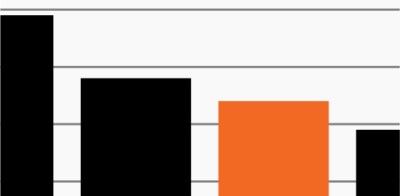Correlation between COVID-19 rates and economic activity vs. volatility

Source: Federal Reserve Bank of Dallas and Federal Reserve Bank of St. Louis, latest data available. A correlation of -1 indicates a perfect, inverse relationship between economic activity (e.g., hours worked, dining traffic, mobility) and new COVID-19 cases. Correlation is measured on a rolling 4-week basis.
- By one measure, hiring fell far short of expectations in July. According to ADP, U.S. businesses hired just 167,000 new workers compared to expectations for 1.2 million. ADP’s figures, though preliminary and for just one month, reflect mounting evidence that economic growth, more than any other factor, is tied to progress in tempering growth in COVID-19 cases.
- To that end, a recent report published by the Dallas Fed highlights the consistent negative correlation since June between new COVID cases and economic activity on a national basis.1 In other words, economic activity has declined the most in states that have seen the most growth in new COVID cases.
- The black line in the chart shows this negative correlation. Somewhat perversely, however, as the daily new COVID case count remains above 50,000 and national economic activity has moderated, so have market expectations for near-term equity volatility (orange line).2 After peaking in mid-March, the CBOE Volatility Index (VIX) has declined gradually and now sits at February levels.
- Equity investors appear to be betting that additional fiscal and monetary support will prop up the U.S. economy and keep markets satisfied. They may prove to be correct, yet data shows that the economic recovery thus far has been bumpy.
- Infections continue to rise in some regions, the political landscape remains fraught heading into election season, and the initial market bounce has begun moving sideways. Despite investors’ apparent confidence, prudent investors may be wise to prepare their portfolios for an imbalanced recovery that may feature further bouts of volatility.



